Medical College and Hospital, Kolkata
Calcutta Medical College, officially Medical College and Hospital, Kolkata, is an Indian medical school and hospital. The school was established in 1835 by Lord William Bentinck as Medical College, Bengal during British Raj and is one of the oldest institutes teaching Western medicine in Asia.
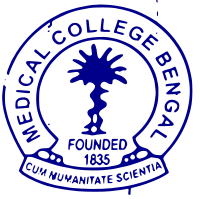 | |
| Motto | Latin: Cum Humanitate Scientia |
|---|---|
Motto in English | Humanity and Science |
| Type | Medical college and hospital |
| Established | 28 January 1835 |
| Founder | Lord William Bentinck |
| Principal | Manju Bandyopadhyay |
| Students | 1,857[1] |
| Undergraduates | 1,245[1] |
| Postgraduates | 612[1] |
| Location | 88 College Street, Kolkata 700001 22.5736°N 88.3619°E |
| Campus | Urban 26 acres (0.11 km2) |
| Affiliations | West Bengal University of Health Sciences |
| Website | www |
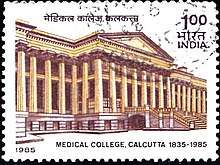
It is the second medical college to teach European medicine in Asia after Ecole de Médicine de Pondichéry and the first to teach in the English language. The hospital associated with the college is the largest hospital in West Bengal. The college imparts the degrees Bachelors of Medicine and Surgery (MBBS) after completion of five and half years of medical training, amongst other qualifications.
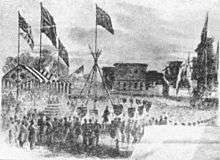
Ranking
The college was ranked 19th among medical colleges in India in 2019 by Outlook India.[2]
Politics
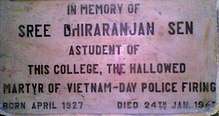
Politics among the students of the institution has rich traditions, with scores of students participating in the Indian freedom struggle.[3] The anti-British movements were implemented in this campus with the programmes of Bengal Provincial Students' Federation (BPSF),[3] the Bengal branch of All India Students' Federation (AISF). Initial focus of student politics was on the independence of India.[3] Many students were dismissed from their college or were gaoled during Quit India Movement in 1942. In 1947, a student of this college, Sree Dhiraranjan Sen, died on Vietnam Day (24 January) police firing.[4] The Vietnam Students’ Association passed a resolution in its Hanoi session in memory of the Indian student martyr in March 1947.[5]
Students politics in this campus was highly influenced by the partition of Bengal and communal riots during and after the Independence (1946-1947).[6] Between 1946 and 1952, medicos of this college stood for communal harmony and worked hard in the refugee colonies. During 1952, some of the ex-students of the college, among them Bidhan Chandra Roy who later became the second Chief Minister of West Bengal, took a major responsibility in the establishment of Students' Health Home for the welfare of students.[6][7]
The students also took part in the Food Movement of 1959. On 31 August, ten students of the college were severely lathi charged by police. Junior doctors also took part in this movement.[8] In the 1950s, 1960s and 1970s the college became a centre of leftist and then far-left politics.[9] Students politics was highly influenced by the Naxalbari movement in early 1970s.[10]
Cultural programmes
Aesculapia, a college cultural festival, was launched in 1976. Taking its name from Asclepius, the God of medicine in Greek mythology, it consisted of three days of inter-college competitive events of music, quizzes, debates, arts and drama. This festival has been replaced by another five-day festival, RHAPSODY, since 2002.[11]
Notable alumni
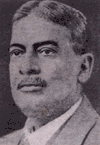
- Vikram Marwah - Padma Shri awardee, conferred Dr. B. C. Roy Award by the President of India.
- Madhusudan Gupta, the first Indian trained in Western medicine to dissect a human corpse.
- Pasupati Bose
- UN Brahmachari
- Keshav Baliram Hedgewar (1 April 1889 – 21 June 1940), also known as Doctorji, was the founding Sarsanghachalak of the Rashtriya Swayamsevak Sangh (RSS).
- Aroup Chatterjee, British Indian atheist physician, author of Mother Teresa: The Untold Story
- Nirmal Kumar Dutta
- Dipyaman Ganguly, N-Bios laureate[12]
- Kadambini Ganguly, the first certified South Asian female physician qualified for Western medical practice
- Bidhumukhi Bose & Virginia Mary Mitra,[13] The two earliest women medical graduates from Medical College, Kolkata
- David Hare (founder of Hare School)
- Bidhan Chandra Roy
- N. C. Paul, first physician to examine yoga
- Ram Baran Yadav, first president of Nepal
- Kamaleshwar Mukherjee, filmmaker
- Balai Chand Mukhopadhyay
- Mukurdipi Ray, Surgical oncologist and author at AIIMS, New Delhi
See also
References
- "Medical College and Hospital, Kolkata Data for NIRF'2020'" (PDF). Medical College and Hospital, Kolkata Feb 13, 2020. Retrieved 14 July 2020.
- "India's Top 25 Medical Colleges In 2019". www.outlookindia.com/. Outlook. 6 June 2019. Retrieved 6 February 2020.
- Dāśagupta, Hīrena; Adhikārī, Harinārāẏaṇa (2008). Bhāratīẏa Upamāhādeśera chātra āndolana [Student Movement in Indian Sub-continent] (in Bengali). Kalakātā: Ryāḍikyāla. ISBN 8185459800.
- Bengal Legislative Council Debates (1947). 1947. pp. 79–88.
- Chattopadhyay, Gautam. ভারতের ছাত্র আন্দোলনের ইতিহাস [History of India's student movement] (in Bengali).
- Jha, Purnendu; Banerjee, Naresh (2003). পিপলস্ রিলিফ কমিটি দ্যুতিময় ইতিবৃত্ত [People's Relief Committee:A Glowing Account] (in Bengali). People's Relief Committee. pp. 11, 42–61.
- Chattopadhaya, Pashupatinath (2001). স্টুডেন্টস্ হেলথ হোম(প্রথম দশক) [Students' Health Home (The First Decade)] (in Bengali). Arun Sen Memorial Committee.
- Jnanabrata Sil (16 September 2010). "Reminiscence of Food Movement - 1959". www.pragoti.in. Archived from the original on 18 March 2015. Retrieved 2 April 2018.
- Chakraborty, Shyamal (2011). 60-70 Er Chatra Andolan (in Bengali). N.B.A Pvt Ltd. ISBN 9788176262408.
- Mitra, Saibal. Saater Chhatra Andolon [An essay on Student Movement of Sixties] (in Bengali). ISBN 81-7990-069-X.
- http://rhapsody2007.blogspot.com/2007/03/rhapsody-2007-committee.html
- "Profile on SERB" (PDF). Scientific and Engineering Research Board. 27 December 2018. Retrieved 27 December 2018.
- Bose, Anjali (editor), Sansad Bangali Charitabhidhan (Biographical dictionary) Vol II, 1996/2004,(in Bengali), p215, 219, ISBN 81-86806-99-7
Bibliography
- David Arnold, Colonizing the Body: State Medicine and Epidemic Disease in Nineteenth Century India, Delhi, 1993
- Calcutta Medical College, The Centenary of the Medical College, Bengal, 1835–1934. Calcutta, 1935
- Das, Anirban; Sen, Samita (2011). "A history of the Calcutta Medical College and Hospital, 1835-1936". In Dasgupta, Uma (ed.). Science and Modern India: An Institutional History, C. 1784-1947. Pearson Education India. pp. 477–522. ISBN 978-81-317-2818-5.
- Poonam Bala, Imperialism and Medicine in Bengal: A Socio-Historical Perspective, New Delhi, 1991
- Sen, S.N., Scientific and Technical Education in India 1781–1900, Indian National Science Academy, 1991
External links
| Wikimedia Commons has media related to Medical College and Hospital, Kolkata. |
